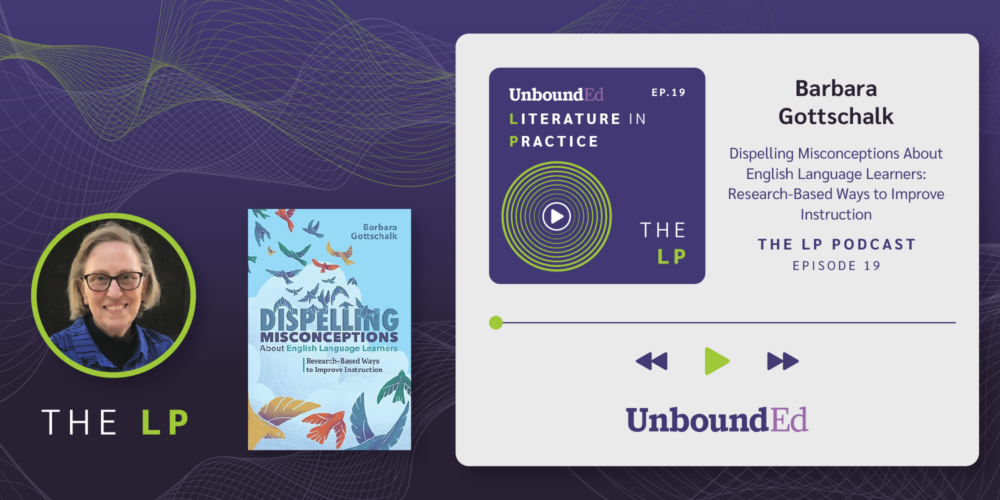
Not only can language function as both a bridge and a barrier, but it can reveal the barriers and bridges that are inherent within us to build. We don’t have to look for proof any further than how we interact and educate English Language Learners in our system.
Too often, the bridges of grade-level, engaging, affirming, and meaningful instruction are limited and the barriers of misconceptions arise. These misconceptions about English Language Learners often hold educators back from properly serving these students. I got a chance to talk with educator Barbara Gottschalk to discuss her book, Dispelling Misconceptions About English Language Learners: Research-Based Ways to Improve Instruction. Join us as we discuss practical ways to overcome psychological barriers, shift away from assumptions, tap into student strengths through home languages, and involve immigrant families more authentically.
Key Takeaways
- It takes 5-7 years for English language learners to master academic English, so teachers need to be patient and allow sufficient time for learning.
- Home language support in the classroom is very beneficial for English learners, despite potential challenges in implementation.
- Immigrant parents can be engaged in their children’s learning in diverse ways, so teachers should avoid assumptions about parental involvement.
- Proper screening, placement, and services for English learners has major implications for their future academic and career opportunities.
Teachers should check their own assumptions and biases about English learners by examining if their perceptions match reality and are evidence-based.
Resources
- Framework: WIDA English Language Development
Standards Framework, 2020 Edition
Kindergarten—Grade 12 - Video: Education Week- Differentiating Instruction: A Guide for Teaching English-Language Learners
- Practice Guide: Teaching Academic Content and Literacy to English Learners in
Elementary and Middle School - Article and Video: Colorín Colorado- Tips for Teaching Middle and High School ELLs

Listen to the LP Podcast
More EpisodesNext steps with GLEAM®
Choose the path that fits your team


UnboundEd Summits
Accelerate your instructional vision and build educators’ skills and expertise with a virtual or on-site Local Summit.
Learn More ➜

In-Service Workshops
UnboundEd’s dynamic, hands-on workshops build educator capacity by focusing on timeless, cross-disciplinary instructional moves that drive effective instruction, rigor, and student empowerment.
Learn More ➜
Online Math Academy
UnboundEd’s Online Math Academy courses enrich educators’ content knowledge and instructional practices to unlock all students’ math potential.
Learn More ➜
Curriculum Adoption
Ensuring quality materials are adopted and used effectively is crucial to improving outcomes and requires a strong instructional materials selection process. We’re here to share guidance and support on leading a rigorous and collaborative curriculum adoption process to select the right materials for your context and goals.
Learn More ➜
Curriculum Implementation
Just getting started, or need to get back on track? We work with you on a shared vision and an actionable plan for curriculum success.
Learn More ➜
Literacy ReclaimEd
Improve literacy instruction and better meet the unique needs of every student.
Learn More ➜
GLEAM® Inventory
Build your team’s understanding of grade-level, engaging, affirming, and meaningful –GLEAM®– instruction and transform how you serve all students in your district.
Learn More ➜
Speaking Engagements
Our experts offer inspiring, thought-provoking messages and conversations that will get your team thinking creatively about shifting mindsets and changing practice.
Learn More ➜
California Math Curriculum Adoption and Launch Cohort
Prepare to adopt and launch high-quality mathematics instructional materials with no-cost, grant-funded support from UnboundEd.
Learn More ➜